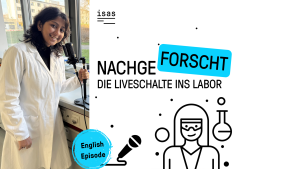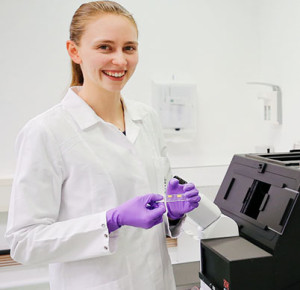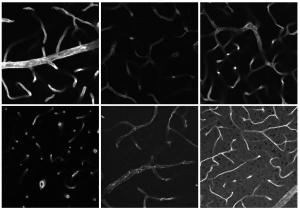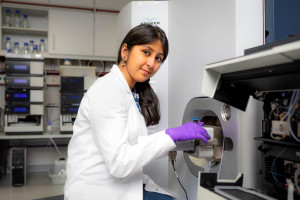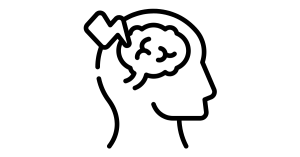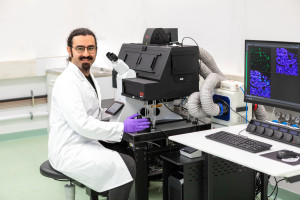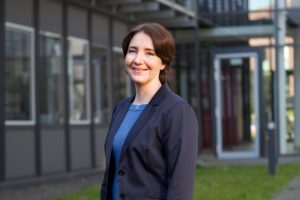Dortmund, 28th July 2021
Our immune system is designed to protect us from diseases. But why is it that our own defence cells can even aggravate some diseases such as cancer? This question interests biologist Julia Lill. In January 2020, she began researching specialised immune cells of the innate immune response, the neutrophil granulocytes (neutrophils), in the Biospectroscopy working group at ISAS. The scientist from Essen wants to understand what role these cells play in the microenvironment of a tumour and why they can sometimes even promote its growth.
As a reaction to a tumour, the blood stem cells in the bone marrow produce more neutrophils, which then enter the tumour. Instead of fighting it, the immune cells often develop tumour-promoting properties. For example, they can produce substances that help the abnormal cells make other immune cells, such as the T cells of the adaptive immune system (see info box), 'fall asleep'. The result: the tumour can grow almost entirely unhindered. In order to understand this mechanism including its causes, Lill has compiled a data set of 3,500 involved proteins from neutrophils from the bone marrow, blood or tumour of mice, in order to identify the critical molecules. "When I look at the proteome data, they tell me a story. I can see which proteins of the neutrophils in the tumour are regulated differently compared to normal tissue," reports the 28-year-old. On the basis of her data, researchers can find out which proteins they should examine more closely in order to develop suitable drug targets in the future. A specific drug therapy could thereby block the tumour-promoting properties of the neutrophils.
Neutrophils are relevant in many ways
Lill already investigated the body's immune response through neutrophils for her dissertation, which she completed in spring 2021 with the distinction summa cum laude. Her work at the University Hospital Essen focused on so-called enterohaemorrhagic Escherichia coli, better known as EHEC pathogens. They produce a cell-damaging protein (shigatoxin) that can cause severe inflammatory reactions in the body. Similar as in a tumour, the neutrophils can 'overreact' and therefore harm the body more than protect it.
From ISAS to Harvard
Since July 2021, Lill has been working as a researcher at Harvard University. "Julia has quickly adapted to the proteome analysis technique, which was completely new to her. The first data are extremely interesting. Despite being here for just one and a half years, she already built up a large network at ISAS. We will miss her, but we can now continue on her groundwork with new forces," says Prof. Dr. Matthias Gunzer, head of the Biospectroscopy department at ISAS. In the US, Lill wants to combine her knowledge from her doctoral thesis and research at ISAS to better understand the immune response in the tumour microenvironment using microscopy on living animals (intravital microscopy).
(Cheyenne Peters)
Innate & adaptive immune response
The immune system is the body's defence system. It consists of two parts that have different tasks: The innate (general) immune response, which includes the neutrophils, reacts quickly to foreign substances in the body. However, the involved immune cells hardly distinguish between individual pathogens and are often not sufficiently effective. The cells of the adaptive (specialized) immune response, such as the T cells, take considerably longer, but can specifically attack certain pathogens.
(Cheyenne Peters)
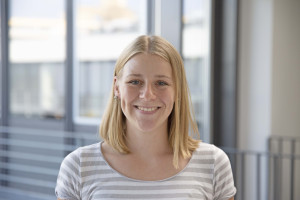
Dr. Julia Lill research at ISAS dealt with the immune response by neutrophil granulocytes.
© ISAS
